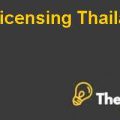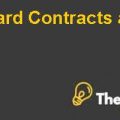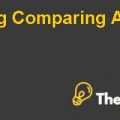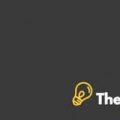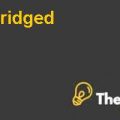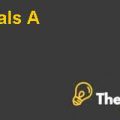STATEMENT AND DISCRIPTION OF CENTRAL ISSUE
Dunkin Brands is the world’s leading franchise of quick service restaurants (QSR), they offer hot and cold coffee, baked goods and hard served ice cream. The company operates under the name of its two most famous and prominent brands; Dunkin’ Donuts and Baskin-Robbins. There are four primary sources of the company that help generate its revenues.
- Royalty income and fees associated with franchised restaurants.
- Rental income from restaurant properties that company lease or sublease to franchises.
- Sales of ice cream and other products to franchisees in certain international markets.
- Other incomes including fees for the licensing of Dunkin’brands.
There are several key issues that are highlighted in the company’s financial statements, the annual report of the company shows certain risk factors that would affect directly to the financial position and performance of the company. Some risk factors include the high competitive market that tends to lower the revenues, the loss of personal information and credit card data of their customers, economic conditions that may have some effect on our business and operational results, actions of sub-franchises that will harm its master-franchise, failure to implement growth strategies related to the new opening of domestic and international restaurants and its negative impact on revenues and operating profits.
The main issue highlights the substantial indebtedness, which could affect the financial conditions of the firm, the debt, as mentioned in the financial statements, has been increased in 2017 as compared to 2016. As the portion of liability and owner’s equity stated on the balance sheet of the firm indicates,the company raised its liability in the current year when comparing it with the previous one. Current portion of long-term liability has been increased by 26 percent from year 2016 to 2017, while other total current liabilities and long-term liabilities have been increased by 11.24 and 16.54 percent respectively. The performance gap of the firms tends to increase with the level of debt that the company holds and as it is a risk mentioned earlier in its annual report that it might decrease the operating profits of the firm.
Dunkin Brand Harvard Case Solution & Analysis
FINANCIAL HIGHLIGHTS
HORIZONTAL ANALYSIS OF FINANCIAL STATEMENT
Accounts payable on its balance sheet show a relatively high& increased percentage on its current liabilities, this shows an increase of 28.6 percent in accounts payable. The overall total current liability has been increased by 11 percent. Whereas, its balance sheet shows that the company holds more than $1 billion of cash and cash equivalents, which means that the company is highly liquidated and should pay off its current liability without extending it further. Its current liability has been increased by 26 percent in 2017 and its long term obligation has been increased by approximately 9 percent. The overall increase in its long term liability is about 16.54 percent, which shows that the company is raising its liability while it has free cash available.
Total revenue of the firm has been increased by approximately four percent in 2017 as compared to 2016. Sales of ice cream have been decreased in the current year while franchise fees and royalty has been increased by eight percent approximately, in 2017. The sales of the company operated restaurants decreased rapidly from 2015 to 2016 and net operating income has been increased by 8 percent during this year....................
This is just a sample partical work. Please place the order on the website to get your own originally done case solution.

